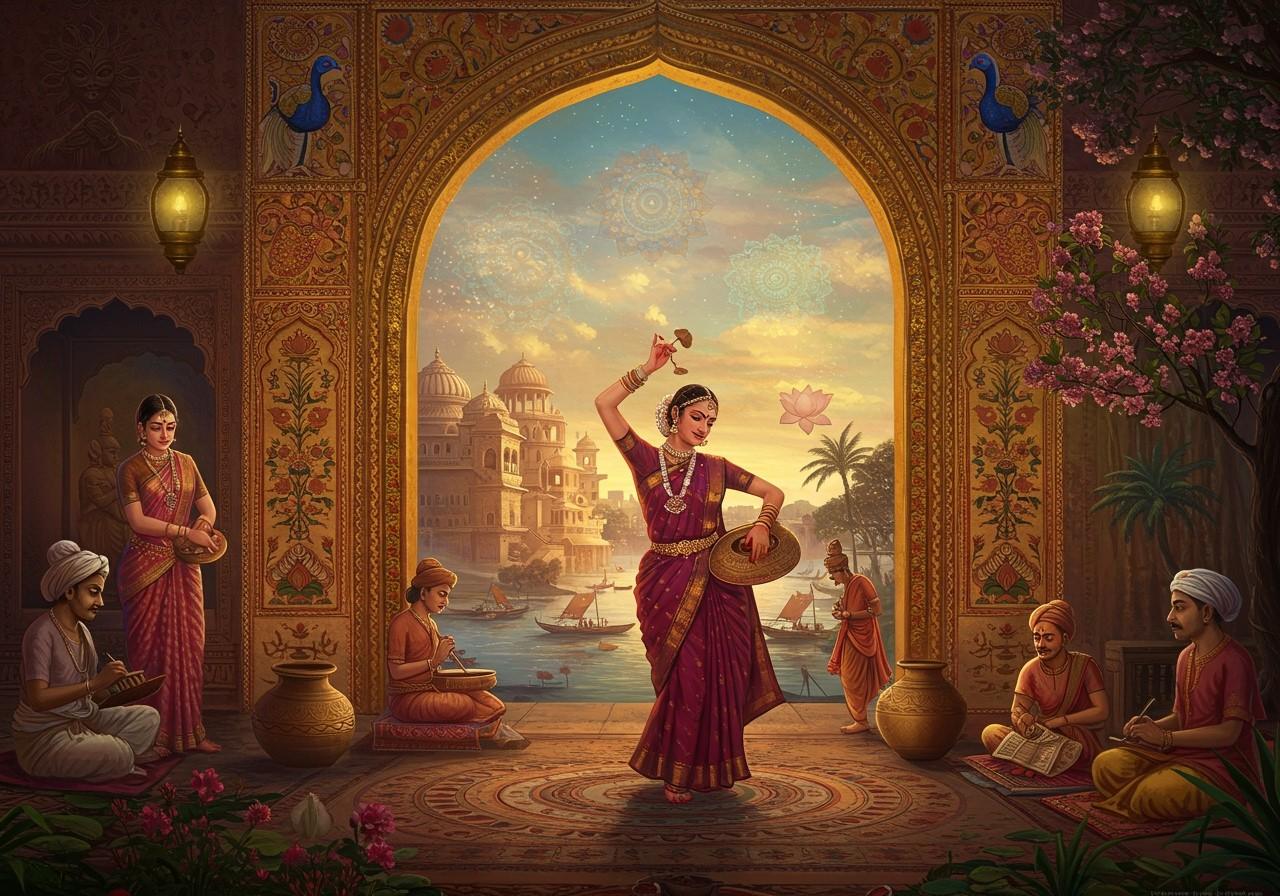
Panchala, an ancient Indian kingdom, boasts a rich cultural heritage. Its contributions to art, literature, and traditions are significant. Exploring Panchala’s history allows us to appreciate its profound impact on Indian culture.
Historical Context of Panchala
Understanding the Panchala Kingdom
Panchala thrived as a prominent kingdom during the Vedic period (c. 1100-500 BCE) and the Mahabharata era. Situated in the Ganges-Yamuna Doab region, near modern-day Kannauj, it encompassed present-day western Uttar Pradesh and parts of Uttarakhand. The kingdom extended from the Himalayas in the north to the River Charmanwati in the south and was bordered by various other kingdoms and regions. Panchala played a crucial role in ancient Indian history, closely allied with the Kuru Kingdom. By the 5th century BCE, it transitioned into an oligarchic republic.
Origins and Timeline
- Origins: Emerged during the Late Vedic period, establishing itself as a significant power.
- Historical Timeline: Flourished from approximately the 11th century BCE to the 5th century BCE, witnessing significant political and social changes.
- Significant rulers: King Drupada and his dynasty, known for their influence and role in the Mahabharata epic.
Archaeological Findings
Important sites that reveal insights into Panchala’s past include:
- Ahichhatra: An ancient city and archaeological site, believed to have been the capital of Panchala.
- Kampilya/Kampil: Another significant city associated with Panchala, mentioned in ancient texts and archaeological discoveries.
Art Forms of Panchala
Diverse Artistic Traditions
Panchala’s artistic legacy encompasses sculpture, painting, and pottery. These art forms reflect the kingdom’s creativity, religious beliefs, and societal structures.
Key Examples
- Terracotta figurines: These figurines, often depicting deities and scenes from daily life, offer a glimpse into Panchala’s religious practices and societal norms.
- Temple architecture: Featuring intricate carvings and unique architectural styles, Panchala’s temples showcase advanced craftsmanship and artistic sensibilities.
Influences and Patronage
Neighboring regions and prevailing artistic trends influenced Panchala’s art. Royal patronage played a vital role in fostering artistic growth and innovation within the kingdom.
Themes and Styles
Common themes found in Panchala’s art include religious and mythological narratives, reflecting the spiritual beliefs and cultural values of the time.
Prominent styles encompass detailed carvings and naturalistic representations, demonstrating skilled craftsmanship and artistic sophistication.
Literature of Panchala
Rich Literary Tradition
Panchala contributed significantly to Sanskrit literature and Vedic texts. The kingdom’s scholars and poets played a key role in shaping literary traditions.
Notable Works
- Rigveda hymns: These hymns offer insights into Panchala’s spiritual beliefs and philosophical perspectives during the Vedic period.
- Mahabharata references: The epic Mahabharata contains numerous references to Panchala, highlighting its historical events and its role in the Kurukshetra War.
Influence on Indian Literature
Panchala’s literary tradition influenced other regions, contributing to the development of religious hymns, epic poetry, and philosophical treatises.
Traditions and Cultural Practices
Unique Traditions
Panchala’s unique traditions encompassed religious rituals, festivals, and temple worship, reflecting the kingdom’s spiritual and social customs.
Daily Life and Social Customs
People in Panchala adhered to specific customs related to clothing, cuisine, and recreational activities, providing insights into their daily lives and social interactions.
Impact on Contemporary Culture
Many of Panchala’s traditions continue to influence Indian culture, fostering community bonds and preserving cultural identity.
Influence and Legacy of Panchala
Lasting Impact
Panchala’s art, literature, and traditions have been preserved over centuries, shaping India’s cultural and religious landscape.
Modern-Day Initiatives
Efforts to preserve Panchala’s heritage include documenting historical texts, restoring ancient sites like Ahichhatra, and celebrating traditional festivals. These initiatives help keep Panchala’s legacy alive for future generations.
Poojn.in: Your Gateway to Preserving Cultural Heritage
Poojn.in, India’s leading online store for cultural and religious goods, offers a wide selection of products to support the preservation and celebration of traditions like those from the Panchala kingdom. Explore our collection and connect with your heritage:
- Customised Dust Coloured Clay Pot: Experience the traditional craftsmanship of clay pottery, reminiscent of ancient Panchala.
- Fabric Coloured Hand-Printed Baran Dala Chalon: Enhance your puja rituals with this beautifully crafted set, reflecting the artistic traditions of ancient kingdoms.
- Explore a wide range of puja items and samagri to connect with your spiritual heritage.
Conclusion
Panchala’s cultural heritage, with its diverse art forms, rich literary traditions, and unique customs, offers a profound connection to India’s past. By understanding and appreciating Panchala’s legacy, we contribute to the preservation of traditions that continue to enrich our lives. Explore more about ancient Indian history and culture through our articles on Hinduism’s origins and the Valmiki Ramayana.
FAQs on Panchala’s Cultural Heritage
What were some significant art forms of Panchala? Panchala excelled in terracotta figurines, intricate temple architecture, and detailed carvings, showcasing its artistic prowess.
Can you give an example of literature from Panchala? The Mahabharata epic features Panchala prominently, reflecting the kingdom’s historical and literary significance. Learn more about this epic through our blog post on Ravana.
Which traditions were unique to Panchala? Panchala’s distinctive traditions included elaborate religious rituals, vibrant festivals, and unique temple worship practices.
How has Panchala’s art influenced contemporary art? Panchala’s artistic motifs and designs continue to inspire modern artists, who often incorporate them into contemporary creations.
What is Panchala’s role in Indian cultural heritage? Panchala’s rich history of art, literature, and traditions has significantly shaped the broader tapestry of Indian cultural heritage.


